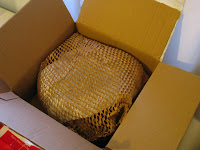 I found out that today is Blog Action Day while reading through my feeds this morning — I've clearly been sleeping. So my small contribution for today is to try to amplify a simple and important message.
I found out that today is Blog Action Day while reading through my feeds this morning — I've clearly been sleeping. So my small contribution for today is to try to amplify a simple and important message.For a while I had been struggling with the whole message of global warming and climate change. The main reason was that the story was weak (in my opinion at least). Now what I mean by weak is that it was not changing enough lives — not creating enough action. I think Seth Godin managed to express the problem best.
The next step was figuring out the solution, which proved to be difficult. Thankfully I came across what I consider to be the best environmental blog I know of, No Impact Man, and in particular, this post.
"My point is that a big boost to the environmental cause might come with spending a little less time making people scared of a worse life and a little more time inspiring them towards a better one"Let us each start working towards a better life right now. We need to realise that the impact of our lifestyle is an event which is taking place now. We have real and immediate problems that need to be addressed, from children suffering from asthma due to exhaust fumes, to the depletion of fish stocks off the West coast of South Africa.
Take action to make a better world for yourself — right now.
Bonus Links:
- The City of Cape Town (my home - thanks to my wife for the photo above) published the "Smart Living Handbook" which has some excellent info and ideas.
- Lawn care for the cheap and lazy (I use these techniques on my own lawn).
- Gardening with indigenous South African plants.
Technorati tags : environment

